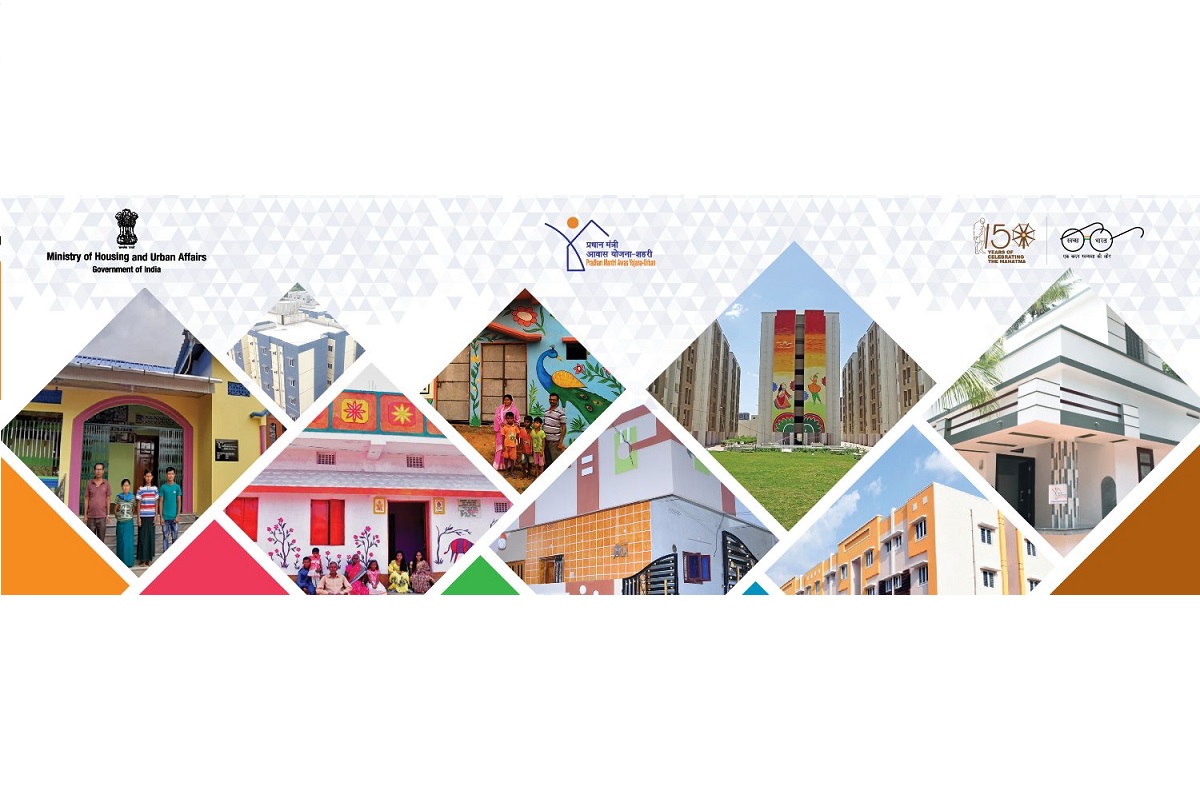The generation of 196.30 crore person-days with a total Central release of Rs 7,491.29 crore, additional two crore rural houses to be constructed under PMAY-G, sanctioning of 3,47,424 houses under the PM-JANMAN as on date and 70,905 houses already been completed across the states and union territories are some of the main achievements of the rural development department during this year.
Mahatma Gandhi National Rural Employment Guarantee Act (Mahatma Gandhi NREGA) is an Act to provide for the enhancement of livelihood security of the households in rural areas of the country by providing at least 100 days of guaranteed wage employment in every financial year to every rural household whose adult members volunteer to do unskilled manual work. The major initiatives under this included National Mobile Monitoring Service (NMMS), Area Officer Monitoring Visit Application, GIS based plan– Use of Space Technology, Yuktdhara: GIS based planning tool , Direct Benefit Transfer and Mission Amrit sarovar among others.
Advertisement
Under the Pradhan Mantri Awaas Yojana-Gramin (PMAY-G), till yesterday , the cumulative target of 3.33 crore houses have been allotted to the States/UTs, out of which 3.22 crore houses have been sanctioned and 2.68 crore houses have been completed.
The PM-JANMAN as approved by the Union Cabinet involves 11 critical interventions covering 9 Ministries of the GoI including the Ministry of Rural Development. The aim is to achieve saturation of PVTG families and habitations with basic facilities viz safe housing, road connectivity, clean drinking water & sanitation, education, health, nutrition, telecom connectivity, electricity, and sustainable livelihood opportunities.
Housing intervention under the scheme is covered through PMAY-G. As on 30th December 2024, a total 3,47,424 houses have been sanctioned and 70,905 houses have been completed across the States and UTs.
Under the Pradhan Mantri Gram Sadak Yojana (PMGSY), a total of 1,62,742 habitations (more than 99.6 per cent of eligible habitations as per census 2001) have been provided connectivity since inception of the PMGSY, out of which, 242 habitations have been provided all-weather road connectivity in the year 2024.
The total size of projects sanctioned under all verticals/ interventions of PMGSY increased to 8,28,791 km of road length and 11,955 bridges. During 2024, road length of 21,854 km and 427 bridges have been sanctioned under all verticals/ interventions of PMGSY. Total Road length of 7,70,228 km and 9,257 bridges have been constructed under various interventions/verticals of the scheme, out of which, road length of 19,606 Km and 3,489 bridges have been constructed in year 2024, which helped rural population in easy access to social facilities and livelihood opportunities.
A comprehensive system of National Level Monitoring was introduced during the year 2003-04 with a view to achieve the purpose of unbiased and objective monitoring of the schemes of the Ministry in a systematic and regular manner. The scheme was revised in 2014 and 2016 by inclusion of monitoring of Pradhan Mantri Gram Sadak Yojana (PMGSY) of Department of Rural Development, Digital India Land Records Modernization Programme (DILRMP) of Department of Land Resources. Also the work of overall assessment of Gram Panchayats in implementation of various programmes, as requested by the Ministry of Panchayati Raj, was brought under the ambit of National Monitoring System from the year 2015-16.
At present, 72 institutions are empaneled for monitoring of Programmes/Schemes of Ministry of Rural Development and Ministry of Panchayati Raj. However, around 52 NLMs have actively taken up these assignments.
Revamping of National Level Monitoring Scheme:
The National Level Monitoring System has been functioning for the last 20 years. The initial version of the system was a quick review mechanism manned by a pool of experienced professional institutions in rural development and Monitoring & Evaluation activities. In the National Level Monitoring System, certain quality issues such as lack of objectivity, understanding and individual biases in the reports have been observed in the recent past. Many institutions of repute and large organisations are not much keen to take up NLM Monitoring assignments due to insufficient remuneration/rates.
In order to capture more detailed information and in-depth analysis of various programmes, data collection tools and methodology need to be suitably modified. It was, therefore, decided to revamp the existing NLM framework with the objective to make it a more robust, responsive, qualitative and useful monitoring & evaluation tool. As per direction of Secretary (RD), the Districts to be monitored, for Regular Monitoring, have been increased from 600 to all Districts in a Financial Year.
Under the revamp of the NLM Schemes, the remuneration rates for NLMs have been appropriately increased and database maintenance has been assigned to National Informatics Centre (NIC). Indian Institute of Public Administration (IIPA), New Delhi has been selected as the new Support Agency for NLM for a period of one year, up to 31st March, 2025. Additionally, the request for Expression of Interest (REOI) for the empanelment of new NLMs (120 Institutional and 40 Individual NLMs) through open advertisement is expected to be completed by December, 2024.
The Deendayal Antyodaya Yojana – National Rural Livelihoods Mission (DAY-NRLM), launched in June 2011, is a Centrally-Sponsored Scheme of the Ministry of Rural Development (MoRD). DAY-NRLM is implemented by the Ministry of Rural Development {Rural Livelihoods (RL) Division} in collaboration with the State Rural Livelihoods Missions (SRLMs). The Mission’s objective is “To reduce poverty by enabling the poor households to access gainful self- employment and skilled wage employment opportunities, resulting in appreciable improvement in their livelihoods on a sustainable basis, through building strong grassroots institutions of the poor.”
The Mission seeks to achieve its objective through investing in four core components viz., (a) social mobilization and promotion and strengthening of self-managed and financially sustainable community institutions of the rural poor; (b) financial inclusion of the rural poor; (c) sustainable livelihoods; and (d) social inclusion, social development and convergence.
A 2019 study by the International Initiative for Impact Evaluation (3ie), supported by the World Bank, highlighted the significant impact of the DAY-NRLM programme. Accordingly, there has been an increase of 19 per cent in income over the base amount. Also, there has been a 20 per cent reduction in reliance on informal loans. A 28 per cent increase in savings among beneficiaries has been noticed. Also, A 4 per cent higher proportion of women engaging in secondary occupations was recorded. Besides, a 6.5 per cent higher access to social welfare schemes in treatment areas compared to baseline figures was also observed.











